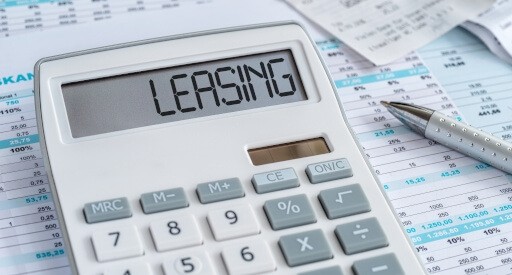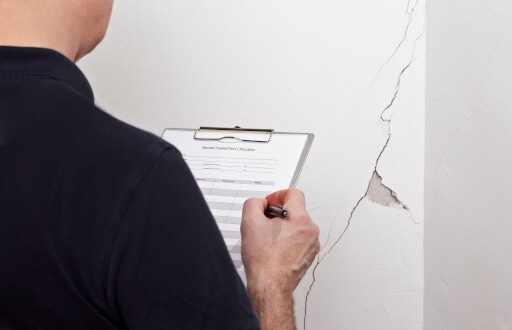Managing rental properties isn't just about knowing the market. It's also important to understand the ins and outs of essential rental legal documents such as lease agreements. As a landlord, having thorough and legally sound rental lease agreements is essential. These documents not only protect your rights but also clearly outline the obligations and expectations for your tenants. Let's explore the important elements of lease agreements so you'll be ready to craft one that safeguards your property and fosters a positive relationship with your tenants.
Residential Lease Documents
Residential lease agreements are fundamental to the relationship between tenants and landlords. Lease agreements set out the rights, responsibilities, and expectations for both parties during the tenancy period. Understanding what a lease agreement entails and why it is necessary can be the difference between a smooth renting experience and a legal battle.
There are different types of leases that you may encounter depending on your property location and regulations, such as fixed-term leases, month-to-month leases, and periodic tenancy agreements.
Fixed-Term Leases
Fixed-term leases have a set start and end date, and the rent amount is agreed upon for the entire duration. These leases give both parties more stability, as there are no surprises or changes in rental payments during the lease period. It is essential to outline the terms and conditions of a fixed-term lease carefully, as breaking the lease early or extending it without reasonable notice may create legal issues.
Month-to-Month Leases
Month-to-month leases are an option for tenants who prefer flexibility over long-term commitments. This type of lease automatically renews every month until the landlord or the tenant gives notice to terminate the agreement. However, the downside of this lease is that rental rates can fluctuate regularly, making it challenging to budget for.
Periodic Tenancy Agreements
Periodic tenancy agreements are like month-to-month leases, but they do not have a specific end date. These types of agreements typically run for an indefinite period, with either the landlord or the tenant having the option to terminate by giving notice. This type of lease can be beneficial for both parties, as it allows for more flexibility in case a tenant needs to move unexpectedly.
The Key Components of a Lease Agreement
The critical document in any rental transaction is the lease or rental agreement. It's a legally binding contract that covers crucial aspects of the landlord-tenant relationship, including the lease term, rent amount and due date, security deposits, and any restrictions or conditions that apply to the property or tenancy. It outlines the rights and responsibilities of both parties and sets expectations for conduct during the tenancy period. While laws may differ depending on your location, there are specific clauses that you should always include in a lease agreement.
Key Components to Include:
-
Legal Names of Parties: Clearly identify to whom the lease pertains. This includes the landlord's full name, tenants' names, and any additional occupants.
-
Property Address: The specific address and unit number of the rental property should be stated to avoid any confusion or disputes.
-
Lease Term: Clearly define the start and end dates of the lease, including any renewal options or notice periods for termination.
-
Rent Amount & Due Date: The total rent amount for the lease term and the due date should be explicitly stated. This helps avoid misunderstandings or disputes over payment amounts.
-
Security Deposit: State the required security deposit amount and any conditions for its return at the end of the tenancy. This includes any potential deductions for damages or unpaid rent.
-
Restrictions & Conditions: Any restrictions on the use of the property, such as no pets or smoking, should be outlined in the lease. Other conditions, such as maintaining insurance or not making alterations to the property without prior approval, should also be included.
-
Pet Policy: If you have a policy regarding pets, make sure it is clearly outlined in the lease agreement.
-
Utilities and Services: Be clear on what services (e.g., water, electricity, garbage collection) are included in the rent and which are the tenant's responsibility. This avoids any confusion or disputes over utility bills.
-
Maintenance Responsibilities: Outline which party is responsible for maintenance and repairs of the property, including how to report issues and a timeline for addressing them.
-
Right of Entry: Include a clause that states when and under what conditions the landlord can enter the property, such as for repairs or inspections.
-
Termination Clause: Clearly state the notice period required from either party to terminate the lease. This prevents any misunderstandings or disputes in case of early termination.
Understanding the different types of leases and their implications, as well as including key components in your lease agreements, is essential for a smooth and successful tenancy experience.
Move-In/Move-Out Checklist
A move-in and move-out checklist serves to document the condition of the property before and after the tenancy. This not only avoids disputes over security deposits but also provides a clear record of the property's state during the tenancy.
What to Document:
-
Appliances and Fixture Condition: Check for any damage or malfunction. Take photos or videos as evidence for future reference.
-
Walls and Ceilings: Look for any cracks, stains, or damage to paint or wallpaper. Take note of any mold or mildew as well.
-
Flooring Condition: Check for scratches, holes, stains, or other damage to carpets, tiles, hardwood floors, or other types of flooring.
-
Windows and Doors: Inspect the screens, frames, and glass for any damage.
-
Bathroom and Kitchen Fixtures: Check for leaks, cracks, or any other damage to sinks, toilets, bathtubs, faucets, cabinets, etc.
-
Utilities: Test all outlets and switches to ensure they are functional. Check the heating/cooling systems and note any issues.
-
Safety Features: Make sure all smoke detectors, carbon monoxide detectors, and fire extinguishers are present and in working condition.
-
General Cleanliness: The property should be clean upon move-in, and the level of cleanliness should be maintained. Note any areas that need cleaning or any damage caused by leaving the property unclean.
-
Move-In/Move-Out Date: Include the date of move-in and move-out on the checklist for reference.
-
Photographs: Supplement the written checklist with photos to show the evidence of any potential damage. Be sure to date and sign the photos for added security.
Addendums
Addendums are supplementary agreements to the rental lease agreement, and they address issues not covered or anticipated in the original lease document. Below are some situations where you would need to use an addendum:
-
When adding or removing roommates from the lease
-
When allowing pets on the property
-
When making changes to the original lease terms
-
When providing additional agreements, such as the use of amenities or utilities included in rent.
Adding an addendum ensures that all parties are aware of and agree to any modifications made to the original lease. It is essential to have all addendums signed and attached to the original lease document for future reference.
As a landlord, having comprehensive and legally enforceable lease documents is crucial for protecting your investment and creating a healthy tenant-landlord relationship. Understanding the different types of leases and essential documents is key to creating a solid foundation for your rental property business.
Legal Considerations When Crafting Lease Documents
Legal compliance is non-negotiable in rental leases. Laws vary by state (and sometimes even by city or county), so it's imperative to stay informed and consult a legal professional when drafting your lease agreement.
Importance of Consulting with a Lawyer
-
Familiarity with State Rental Laws: A lawyer can ensure you are in compliance with all relevant laws and regulations. They can also advise you on any specific requirements related to your property location.
-
Tailored Documents: An attorney can provide customized agreements based on your needs and preferences, making sure all essential elements are covered.
-
Legal Advice: Receive guidance on wording and what clauses to include or exclude. They can also advise you on the implications of provisions in your agreement.
-
Protection from Legal Disputes: A lawyer ensures all your documents are legally sound, minimizing the risk of disputes and costly legal battles.
Tailoring Documents to Specific Situations
Each rental situation is unique, and your lease documents should reflect that. For example, a standard lease may not serve the needs of a rent-controlled unit, or the provisions for multi-unit properties may differ from single-family homes. Consulting with a lawyer can help tailor your documents to your specific situation, ensuring they are legally enforceable and protect your interests.
Avoiding "Boilerplate" Templates
While a template can be a helpful starting point, it should be viewed as just that. Boilerplate language can be both overly vague and overly complex, so it's important to tailor each section to fit the specific rental situation as well as the state and federal laws. A lawyer can help ensure that all provisions are clear, unambiguous, and legally enforceable.
Find Standard Lease Templates and Resources
Numerous resources provide standard lease agreement templates as a starting point, but you can simplify lease agreement creation by using Apartments.com. Our Rental Tools platform allows you to easily create fully customizable, state-specific, and legally binding lease agreements tailored to your property. Tenants can conveniently sign leases online, eliminating the need for physical paperwork storage. Apartments.com ensures your leases are well-organized and easily accessible for future reference. Head over to Apartments.com's Rental Tools today and simplify your lease agreement creation process.
Preparing lease documents may seem daunting, but the effort put into creating clear, comprehensive, and legally sound agreements will undoubtedly pay off in the long run. By understanding the significance of each piece of the lease puzzle and the legal implications at stake, you can ensure a transparent and productive rental relationship with your tenants. Utilizing the resources and tools available, such as Apartments.com's Rental Tools platform, can simplify the process and provide peace of mind for both parties during the leasing process.











